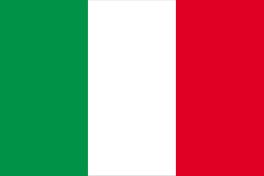Donate to Support Supercluster
Your support makes the Astronaut Database and Launch Tracker possible, and keeps all Supercluster content free.
SUPPORTSupercluster on Patreon
Your support makes the Astronaut Database and Launch Tracker possible, and keeps all Supercluster content free.
SUPPORTThis goes
to space
CERES
CERES
CERES, also known as Capacité de Renseignement Electromagnétique Spatiale or Space Signal Intelligence Capacity is a French military intelligence satellite system, consisting of three closely positioned satellites that are designed to detect and locate ground signals, along with ground control and user ground segments.
CERES will be the first operational interception system for the French defense agency and draws on the experience acquired from the ESSAIM and ELISA demonstrator satellites launched in 2004 and 2011 respectively.
Thales Alenia Space will provide the EliteBus busses and Airbus Defence and Space the payload.
The program cost is estimated at 450M€.
Image: Arianespace
On this
rocket
Vega
Vega
Vega (Italian: Vettore Europeo di Generazione Avanzata, French: Vecteur européen de génération avancée, literal translation: Vector European Generation Advanced) joined the family of launch vehicles at Europe’s Spaceport in French Guiana in 2012. It has demonstrated impressive capabilities ranging from equatorial to Sun-synchronous orbits, from orbital to suborbital missions, from single to multiple payloads.
Unlike most small rockets, Vega is able to lift payloads ranging from a single satellite up to one main satellite plus additional small satellites and place them into separate orbits on a single mission.
Vega is designed to deliver about 1500 kg into a 700 km-altitude circular orbit at 90° inclination. This makes Vega the ideal launch vehicle for most scientific and Earth observation missions. Launching into an equatorial orbit enabled Vega to carry the maximum payload capacity of 2 tonnes with ESA’s experimental IXV spaceplane.
Vega Elements
Vega is a 3 m-diameter single-body vehicle, standing 30 m tall with a liftoff mass of 137 tonnes. It has three solid-propellant stages and a liquid-propellant upper module for attitude and orbit control as well as satellite release.
Vega History
Vega officially became an ESA programme in June 1998, when the Agency inherited the small-launcher programme of Italy’s ASI space agency.
Following Vega’s debut on 13 February 2012, ESA ensured a smooth transition of Vega from development to exploitation. This included securing the initial exploitation of Vega by supporting the development of complementary technical advances and demonstrating a range of capabilities and flexibility over five more launches.
Vega moved to full commercial exploitation in December 2015.
At the same time, ESA refined and improved the launch system configuration and operations. This lowered costs mainly by speeding up the launch campaign.
The Vega launches in 2015 (IXV, Sentinel-2A and LISA Pathfinder) displayed the capacity of the system to reach three missions per year, providing confidence to customers and helping Arianespace to maintain its lead in this market segment.
In a proof of concept flight in 2020, Vega demonstrated a new modular payload dispenser called the Small Spacecraft Mission Service (SSMS) designed to meet the need for affordable routine rideshare missions to space for multiple small satellites.
Caption courtesy of ESA.
From this
launch site
ELV - Guiana Space Center - Kourou, French Guiana
The Ensemble de Lancement Vega (ELV) pad at the Centre Spatial Guyanais (Guiana Space Centre) was previously used to launch the Europa, Ariane 1, Ariane 2, and Ariane 3 rockets under a different name.
It hosted its first launch on November 5th, 1971 when a Europa rocket launched the STV-4 payload. It was used for the final time for an Ariane 3 rocket in 1989, after which it went unused until 2012 when Vega began flying.
Located in French Guiana, the ELV pad is part of the French and European spaceport located near Kourou on the northern tip of South America.
Guiana Space Centre
The space center has been operational since 1968 and has hosted launches for the European Space Agency (ESA), the French National Centre for Space Studies, and commercial companies Arianespace and Azercosmos.
A total of 9 different rocket types have launched from the Guiana Space Centre, including three active rockets and six retired vehicles.
The current rockets of the Guiana Space Centre include the Ariane 5 for heavy payloads, the Russian-provided Soyuz 2 for medium-mass satellites, and Vega for smaller spacecraft.
The spaceport is also preparing for the Ariane 6, Vega C, and Vega E rockets currently under development that will launch from the space centre.
Photo: European Space Agency - S. Corvaja
GET THE SUPERCLUSTER APP
THE SUPERCLUSTER PODCAST
A podcast exploring the amazing milestones that changed space history, the wildest ideas that drive our future, and every development in this new Golden Age of Space.
Donate to support
Your support makes the Astronaut Database and Launch Tracker possible, and keeps all Supercluster content free.
SupportCOPYRIGHT 2021 SUPERCLUSTER LLC




